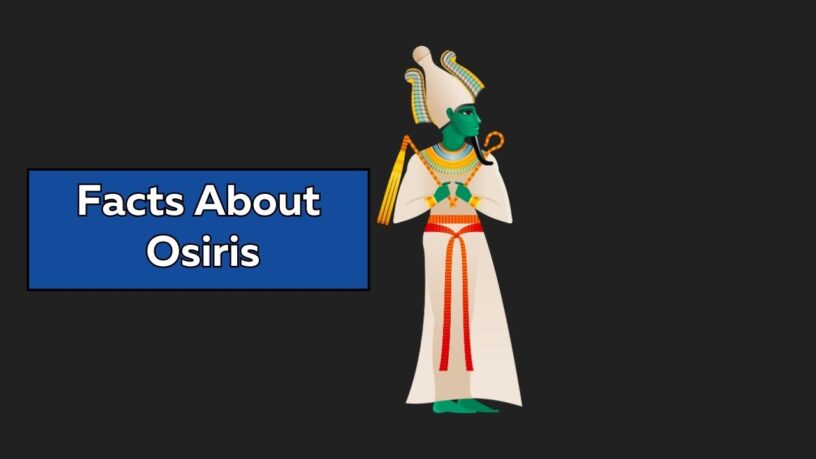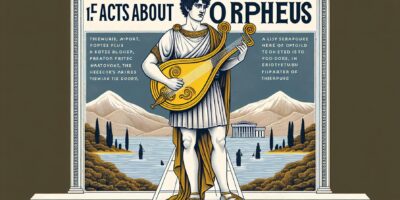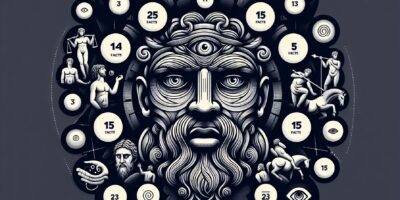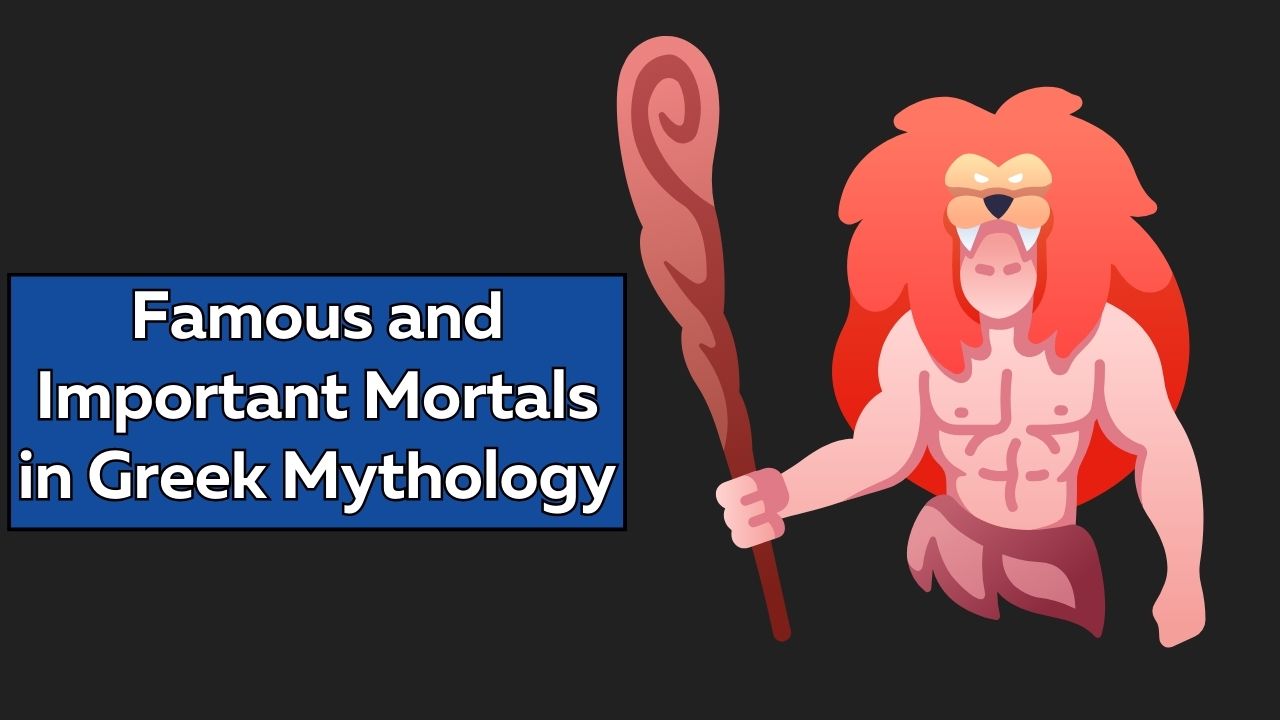In the vast tapestry of ancient Egyptian mythology, Osiris stands as a monumental figure—a symbol of rebirth, resurrection, and the eternal cycle of life. This deity’s story is as captivating as it is significant, and delving into the world of Osiris offers us a profound glimpse into the culture and beliefs of this ancient civilization. In this article, we are about to embark on a journey to uncover 15 intriguing facts about Osiris, each revealing a different facet of this mythical entity’s influence on the land of the Pharaohs.
Fact 1: Osiris, the Benevolent Ruler
- The God of the Afterlife: Osiris was hailed as the god of the afterlife, presiding over the judgment of souls in the Hall of Ma’at. Here, he determined whether a soul was worthy of entering the blissful realm of the dead or would face eternal punishment.
- The Ideal Pharaoh: In Egyptian culture, Osiris represented the ideal pharaoh—just, wise, and caring for his people. Pharaohs believed that by emulating Osiris, they would ensure prosperity and harmony in their kingdom.
- Symbol of Rebirth: Osiris’s resurrection after his murder by Set was a powerful symbol of the eternal cycle of life, death, and rebirth. His story offered hope for the dead, emphasizing that death was not the end, but a transition to a new existence.
Fact 2: Osiris’s Iconic Appearance
- Green Skin: Osiris was often depicted with green skin, symbolizing rebirth and fertility. This unique trait set him apart from other deities.
- Crown of Egypt: He wore the “atef crown,” a white crown with ostrich feathers, which represented Upper Egypt. This signified his authority over the southern regions of Egypt.
- Crook and Flail: In his hands, Osiris held the crook and flail, symbols of rulership and divine authority. These were often seen in the hands of pharaohs as well.
Fact 3: Osiris’s Challenging Sibling Rivalry
- Set, the Jealous Brother: Osiris’s nemesis, Set, was his own brother. Jealous of Osiris’s power and popularity, Set murdered him, leading to a bitter feud between the two.
- Isis, the Loyal Sister: Osiris’s sister and wife, Isis, played a pivotal role in his resurrection. She searched for his scattered body parts, piecing him back together and using her magic to bring him back to life.
- Horus, the Avenger: Osiris and Isis’s son, Horus, sought revenge against Set for his father’s murder. The conflict between Horus and Set is a central theme in Egyptian mythology.
Fact 4: The Osiris Myth’s Key Elements
- The Murder of Osiris: Set, overcome by jealousy, tricked Osiris into a coffin and sealed it, then threw it into the Nile. Osiris drowned, and his body was torn into 14 pieces.
- Isis’s Quest: Isis embarked on a quest to find her husband’s body parts, traveling far and wide to retrieve them.
- Resurrection: With the aid of powerful spells, Isis brought Osiris back to life temporarily, and together they conceived their son, Horus.
Fact 5: Osiris and the Nile
- Nile as His Lifeline: Osiris’s association with the Nile River was profound. It was believed that the annual flooding of the Nile represented his tears of joy upon seeing the fertility and abundance the river brought to Egypt.
- The Importance of Flooding: The Nile’s annual inundation played a crucial role in Egyptian agriculture, ensuring fertile soil and bountiful harvests.
- Festivals and Celebrations: The ancient Egyptians celebrated Osiris through various festivals, with the most notable being the “Feast of Osiris,” marking the beginning of the planting season.
Fact 6: Osiris, the Judge of Souls
- The Weighing of the Heart: In the afterlife, souls were judged by Osiris. The deceased’s heart was weighed against the feather of Ma’at, the goddess of truth. If the heart was lighter than the feather, the soul was deemed pure and granted passage to the afterlife.
- The Hall of Two Truths: Osiris’s judgment took place in the Hall of Two Truths. Souls had to recite their sins and affirm their innocence before the 42 judges present.
- Thoth, the Scribe: Thoth, the god of wisdom, recorded the results of the judgment. If a soul was found unworthy, it faced the devourer, Ammit, a monstrous creature that would consume the heart.
Fact 7: Osiris’s Connection to Anubis
- Anubis, the Guide of Souls: Anubis, often depicted with the head of a jackal, was closely associated with Osiris. He was responsible for guiding souls to the afterlife.
- The Embalmer: Anubis also played a significant role in the embalming process, ensuring that the deceased’s body was preserved for the journey to the afterlife.
- Protecting the Mummy: Anubis was believed to protect the mummy and ensure a safe passage to the underworld.
Fact 8: Osiris’s Worldwide Influence
- Global Mythological Influence: The Osiris myth greatly influenced other mythologies and religions, with parallels found in Greek, Roman, and even Christian traditions.
- Resurrection Motif: The concept of resurrection, as seen in the Osiris myth, has been a recurring theme in various cultures, reflecting the universal human desire for life after death.
- Modern Symbolism: Even in modern times, Osiris remains an enduring symbol of rebirth, hope, and the eternal cycle of life, making appearances in literature, art, and pop culture.
Fact 9: Osiris’s Role in the Egyptian Afterlife Beliefs
- Eternal Life: Osiris’s story assured the Egyptians that eternal life was attainable, provided they led virtuous lives and were deemed worthy in the afterlife.
- Mummification Practices: The preservation of the body through mummification was closely linked to Osiris’s promise of resurrection and eternal life.
- Funerary Texts: The Book of the Dead and other funerary texts contained spells and instructions to help the deceased navigate the afterlife and secure Osiris’s favor.
Fact 10: Osiris in Art and Architecture
- Statues and Reliefs: Osiris’s likeness can be found in numerous statues, tomb reliefs, and temple decorations across Egypt. These depictions played a central role in religious practices.
- Temple of Osiris: The temple of Osiris at Abydos was a place of pilgrimage, believed to be the burial site of Osiris. It became a prominent center for Osiris worship.
- Osirian Architecture: Some of Egypt’s grandest monuments, such as the pyramids and the Sphinx, are believed to be imbued with Osirian symbolism, serving as a link between the living and the dead.
Fact 11: Osiris, the God of Fertility
- Agricultural Symbolism: Osiris was closely associated with the fertility of the land and the annual cycle of planting and harvesting.
- Bringing Life to the Desert: His story was a metaphor for the transformation of the barren desert into fertile, life-sustaining land through the waters of the Nile.
- Cultivation Rituals: The cult of Osiris included rituals and ceremonies that mirrored the agricultural cycle, ensuring abundant crops.
Fact 12: Osiris’s Role in the Egyptian Pantheon
- One of the Ennead: Osiris was part of the Heliopolitan Ennead, a group of nine deities worshipped in Heliopolis, with Ra, the sun god, as their leader.
- Connections to Other Gods: Osiris had connections with several other deities, including Thoth, Hathor, and Ma’at, each representing different aspects of life and death.
- Reconciliation with Set: In some versions of the myth, Osiris eventually forgave Set, representing the cyclical nature of creation, destruction, and rebirth.
Fact 13: Osiris and the Mystery of the Djed Pillar
- The Djed Pillar: The Djed pillar is an ancient Egyptian symbol often associated with Osiris. It represents stability and endurance, similar to Osiris’s role in the afterlife.
- Symbol of Resurrection: The Djed pillar was also seen as a symbol of resurrection, reinforcing Osiris’s association with rebirth.
- Ritual Importance: In religious rituals, the raising of the Djed pillar was a significant event, symbolizing the cyclical nature of life.
Fact 14: Osiris’s Immortality Through Writing
- Hieroglyphs and Symbols: The Osiris myth was documented extensively in hieroglyphs and other symbols, preserving his story for future generations.
- The Osireion: The Osireion at Abydos, believed to be the tomb of Osiris, was adorned with hieroglyphic inscriptions detailing his myth.
- Mythological Literature: Various texts, including the Pyramid Texts and the Coffin Texts, contained references to Osiris, ensuring that his story endured.
Fact 15: Osiris’s Modern Significance
- Legacy in Art and Literature: Osiris continues to inspire artists, writers, and scholars, reflecting the enduring fascination with his story and its themes.
- Popular Culture: References to Osiris can be found in various forms of popular culture, from books and movies to video games and music.
- A Timeless Symbol: As an emblem of life, death, and rebirth, Osiris remains a symbol of hope, resilience, and the enduring legacy of ancient Egypt.
Conclusion
As we journey through these 15 captivating facts about Osiris, we discover a deity whose influence reached far beyond the ancient Egyptian civilization. Osiris’s story, with its themes of life, death, and rebirth, continues to resonate with people across the ages, a testament to the enduring power of mythology and the human fascination with the mysteries of existence. From the banks of the Nile to the modern world, the legacy of Osiris remains as vital and vibrant as the lush fields nourished by the annual flooding of the river—a symbol of rebirth and hope that transcends time and borders.







Leave a Reply